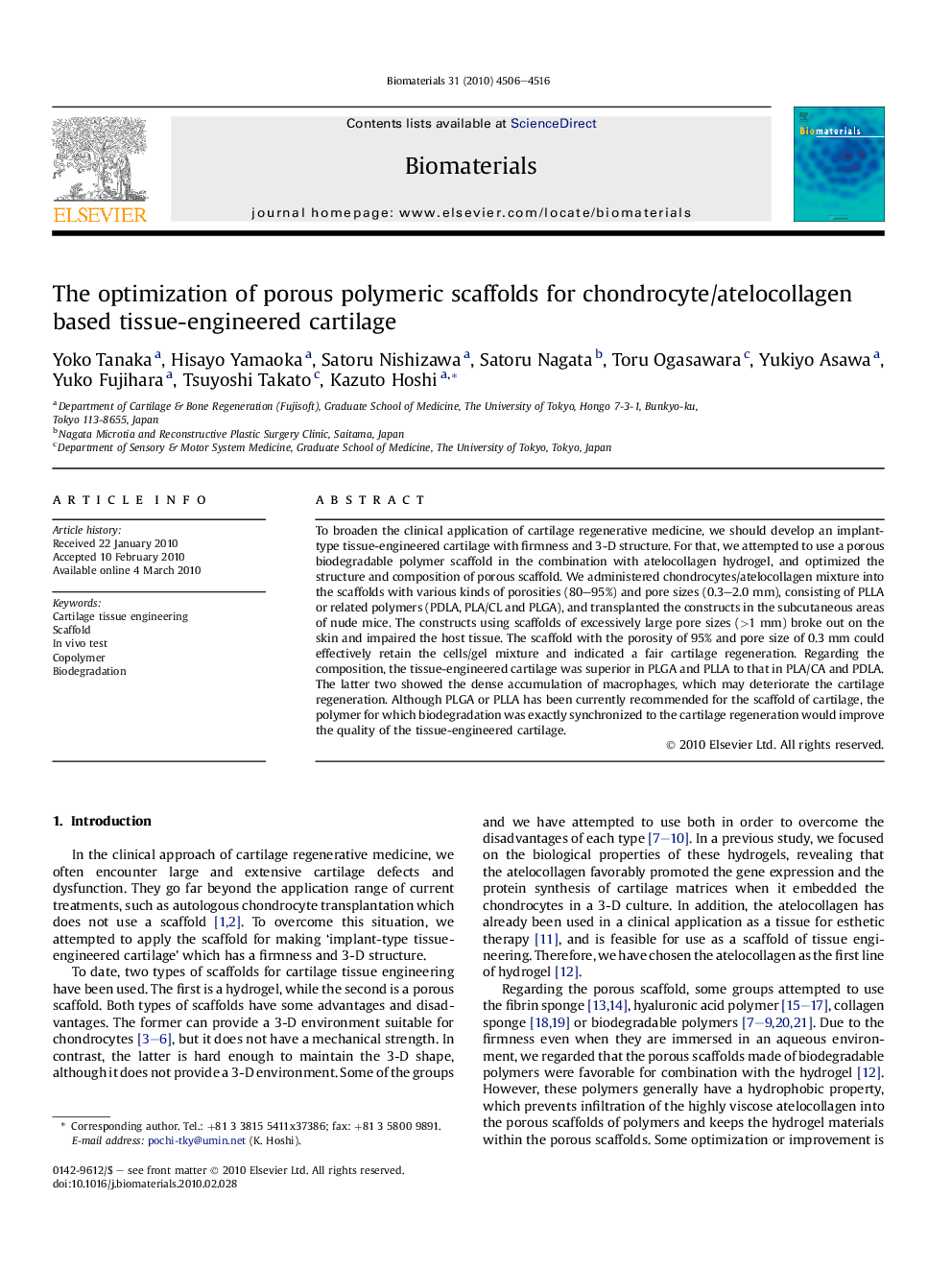| Article ID | Journal | Published Year | Pages | File Type |
|---|---|---|---|---|
| 9006 | Biomaterials | 2010 | 11 Pages |
To broaden the clinical application of cartilage regenerative medicine, we should develop an implant-type tissue-engineered cartilage with firmness and 3-D structure. For that, we attempted to use a porous biodegradable polymer scaffold in the combination with atelocollagen hydrogel, and optimized the structure and composition of porous scaffold. We administered chondrocytes/atelocollagen mixture into the scaffolds with various kinds of porosities (80–95%) and pore sizes (0.3–2.0 mm), consisting of PLLA or related polymers (PDLA, PLA/CL and PLGA), and transplanted the constructs in the subcutaneous areas of nude mice. The constructs using scaffolds of excessively large pore sizes (>1 mm) broke out on the skin and impaired the host tissue. The scaffold with the porosity of 95% and pore size of 0.3 mm could effectively retain the cells/gel mixture and indicated a fair cartilage regeneration. Regarding the composition, the tissue-engineered cartilage was superior in PLGA and PLLA to that in PLA/CA and PDLA. The latter two showed the dense accumulation of macrophages, which may deteriorate the cartilage regeneration. Although PLGA or PLLA has been currently recommended for the scaffold of cartilage, the polymer for which biodegradation was exactly synchronized to the cartilage regeneration would improve the quality of the tissue-engineered cartilage.
